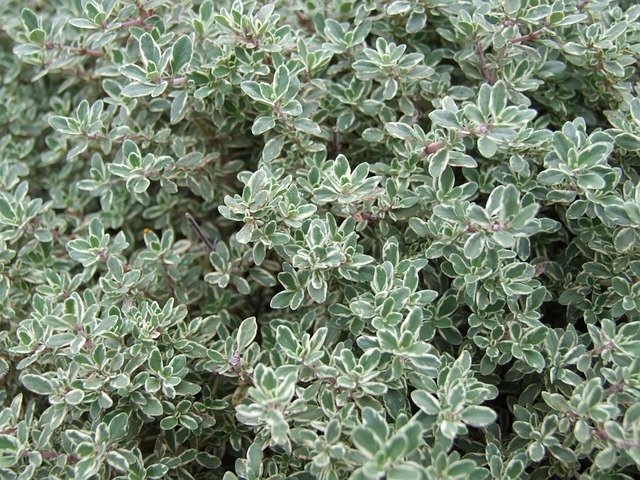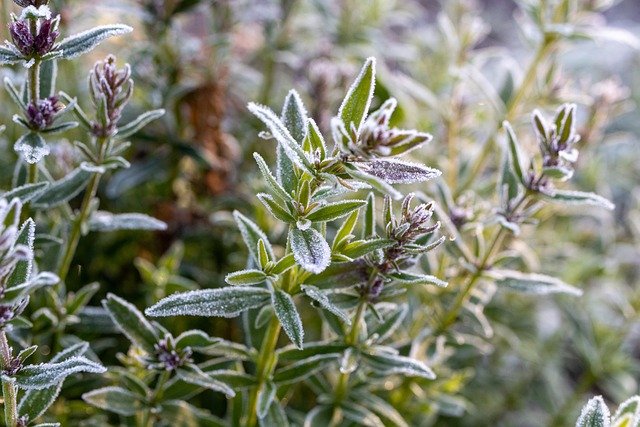Thyme (Thymus vulgaris) is a fragrant and hardy herb that can enhance both your culinary creations and the aesthetic appeal of your rooftop garden. Known for its versatility, thyme is relatively easy to grow and maintain. Here’s a comprehensive guide to help you cultivate thyme on your rooftop garden successfully.
1. Selecting the Right Variety
Thyme comes in several varieties, each with its unique flavor and growth habits:
- Common Thyme (Thymus vulgaris): Popular for culinary uses.
- Lemon Thyme (Thymus citriodorus): Features a citrusy aroma.
- Creeping Thyme (Thymus serpyllum): Excellent as a ground cover.
For culinary purposes, common thyme and lemon thyme are excellent choices.
2. Setting Up the Rooftop Garden
Containers and Soil:
- Choose pots or containers with adequate drainage. Thyme doesn’t tolerate waterlogged soil.
- Use a well-draining potting mix. A blend of potting soil, sand, and perlite is ideal.
Location:
- Place the containers in a sunny spot. Thyme requires at least 6-8 hours of direct sunlight daily for optimal growth.
Wind Protection:
- Rooftops can be exposed to strong winds. Use windbreaks or position the pots in sheltered areas to protect your thyme plants.
3. Planting Thyme
From Seeds:
- Start seeds indoors 6-8 weeks before the last expected frost.
- Sow seeds on the surface of the soil and lightly press them in.
- Keep the soil moist and warm (around 70°F/21°C) until germination, which takes 14-28 days.
From Cuttings:
- Take a 4-6 inch cutting from a healthy thyme plant.
- Remove the lower leaves and dip the cut end in rooting hormone.
- Plant the cutting in a pot filled with moist potting mix.
- Cover with a plastic bag to maintain humidity and place in indirect light until roots develop (2-4 weeks).
Transplanting:
- Once seedlings or cuttings are established, transplant them into larger pots or directly into the rooftop garden beds.
- Space plants about 12 inches apart to allow for adequate airflow and growth.
4. Caring for Thyme
Watering:
- Thyme prefers dry conditions. Water the plants thoroughly but allow the soil to dry out between waterings.
- Avoid overwatering, as this can lead to root rot.
Fertilizing:
- Thyme is a light feeder. Use a balanced, all-purpose fertilizer sparingly.
- Over-fertilizing can result in reduced flavor intensity.
Pruning:
- Regular pruning encourages bushy growth. Pinch back the tips of the stems to promote branching.
- Harvest thyme frequently to keep the plant compact and productive.

5. Pest and Disease Management
Common Pests:
- Thyme is relatively pest-resistant but can occasionally attract aphids, spider mites, and whiteflies.
- Use insecticidal soap or neem oil to manage any infestations.
Diseases:
- Thyme is generally disease-resistant but can suffer from root rot if overwatered.
- Ensure proper drainage and avoid overhead watering to prevent fungal diseases.
6. Harvesting and Storing Thyme
Harvesting:
- Harvest thyme leaves as needed once the plant is well-established.
- For drying, harvest just before the plant flowers, when the flavor is at its peak.
Drying and Storing:
- Hang small bundles of thyme upside down in a cool, dry place with good air circulation.
- Once dried, strip the leaves from the stems and store them in airtight containers away from light and heat.
7. Winter Care
- In colder climates, bring potted thyme indoors before the first frost.
- Alternatively, provide extra protection by mulching heavily around the base of the plants.
Conclusion
Growing thyme in your rooftop garden is a rewarding endeavor that brings both aesthetic and culinary benefits. With its minimal maintenance requirements and robust nature, thyme is an excellent herb for both novice and experienced gardeners. By following these guidelines, you can enjoy a thriving thyme garden and a plentiful harvest of aromatic leaves year-round. Happy gardening!


Leave A Comment